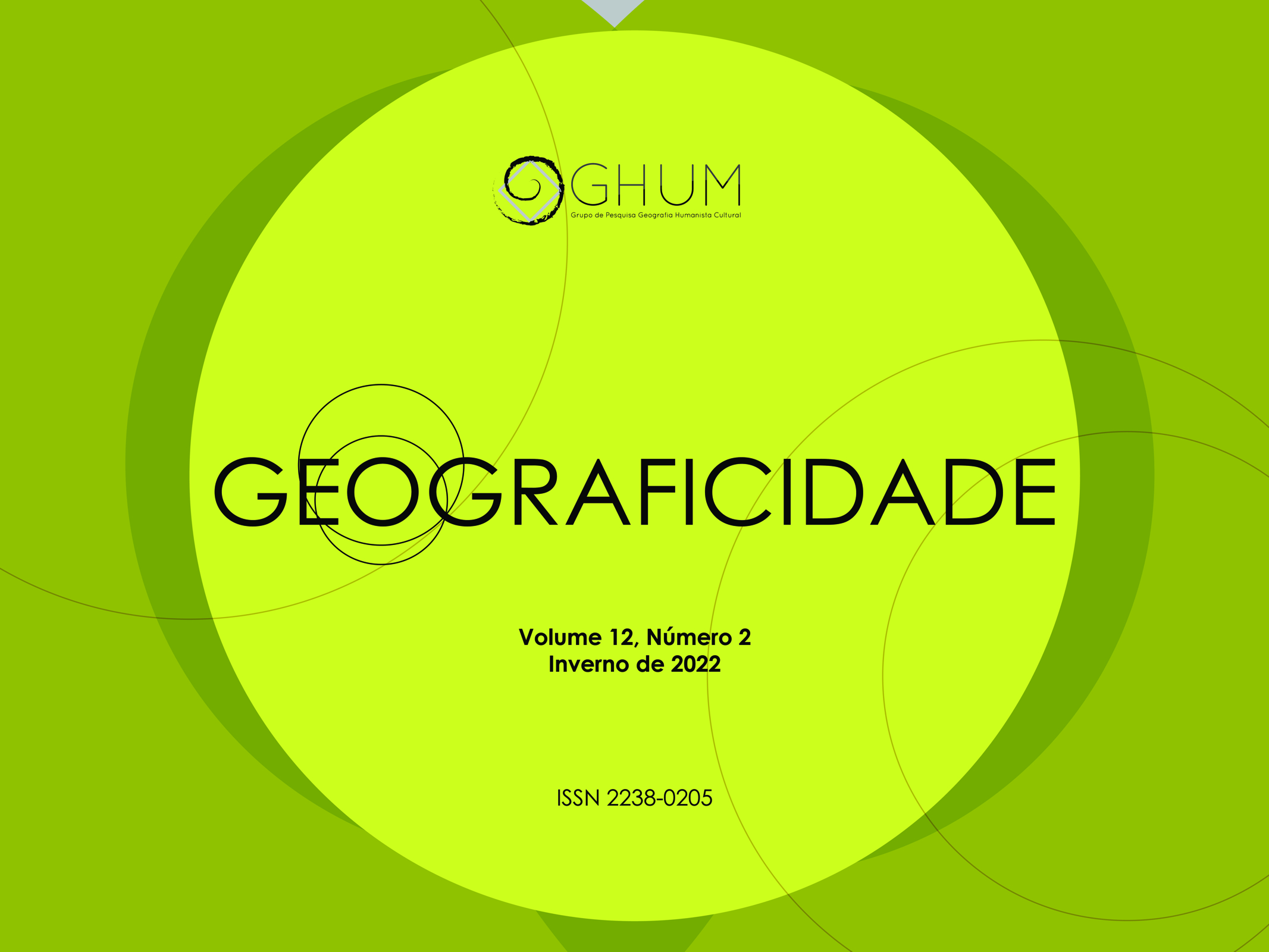Atmosferas de angústica
o caso da COVID-19
Palavras-chave:
Covid-19, Atmosferas, AngústiaResumo
O surgimento da doença infecciosa conhecida como Covid-19 causou mortes e doenças generalizadas, agitação econômica e incerteza global, cujo impacto e extensão permanecem atualmente desconhecidos. Ao longo disso, também houve um crescimento conveniente da angústia em diferentes populações. No entanto, a angústia produzida pela Covid-19 não é apenas um estado afetivo vivenciado pelos indivíduos, é também algo que se estende no mundo cotidiano como parte de uma atmosfera geral. O ponto de partida deste capítulo é que o conceito de atmosfera pode desempenhar um papel importante na explicação de (i) como a angústia é distribuída pelo mundo e (ii) como a angústia pode instituir-se e expressar-se em coisas específicas sem ser redutível a elas. O capítulo se desdobra de três maneiras. Em primeiro lugar, o texto considera a estrutura intencional de uma atmosfera, dando atenção especial à forma como uma atmosfera gera um estilo afetivo específico. Em segundo lugar, é dada atenção a um dos temas salientes da angústia da Covid-19; ou seja, ficar em casa e sair de casa. Finalmente, o trabalho se concentra em como o corpo vivido é aumentado na e através das lentes do coronavírus. O capítulo conclui consolidando o papel que as atmosferas desempenham na síntese desses elementos.
Downloads
Referências
AHO, Kevin. The uncanny in the time of pandemics: Heideggerian reflections on the coronavirus. The Heidegger Circle Annual, v. 10, p. 1-19, 2020.
BERGO, Bettina. Anxiety: A Philosophical History. Oxford: Oxford University Press, 2020.
BÖHME, Gernot. Atmosphere as the fundamental concept of a new aesthetics. Thesis Eleven, v. 36, p. 113-126, 1993.
BÖHME, Gernot. Atmospheric Architectures: The Aesthetics of Felt Space. London: Bloomsbury, 2017.
CHESLER, Caren. Oh, no! Do I have a fever? When coronavirus fears rev up my hypo chondria, my 9-year-old keeps me grounded. The Washington Post, 16 de maio de 2020. Disponível em: https://www.washingtonpost.com/health/oh-no-do-i-have-a-fever-when-coronavirus-fears-rev-up-my-hypochondria-my-9-year-old-keeps-me-grounded/2020/05/15/47285304-8a1d-11ea-ac8a-fe9b8088e101_story.html. Acesso em: 16 mai. 2020.
DOLEZAL, Luna. Intercorporeality and social distancing. The Philosopher, 18 de novembro de 2021. Disponível em: https://www.thephilosopher1923.org/essay-dolezal. Acesso em: 30 mar. 2023.
DUCHARME, Jamie. How to soothe your re-entry anxiety as COVID 19 lockdowns lift. Time Magazine, 11 de junho de 2020. Disponível em: https://time.com/5850143/Covid-19-re-entry-anxiety/. Acesso em: 11 jun. 2020.
ELLIOTT, Larry. Half of British adults ‘felt anxious about Covid-19lockdown. The Guardian, 4 de maio de 2020. Disponível em: https://www.theguardian.com/society/2020/may/04/half-of-british-adults-felt-anxious-about-covid-19-lockdown. Acesso em: 4 mai. 2020.
GRIFFERO, Tonino. Atmospheres: Aesthetics of Emotional Spaces. Trad. Sarah De Sanctis. New York: Routledge, 2014.
GRIFFERO, Tonino. Quasi-Things: the Paradigm of Atmospheres. Trad. Sarah De Sanctis. New York: State University of New York Press, 2017.
HEIDEGGER, Martin. Basic Writings. Trad. Albert Hofstadter. New York: Harper & Row, 1977.
HEIDEGGER, Martin. Being and Time. Trad. John Macquarrie e Edward Robinson. New York: Harper Collins, 2008.
HUSSERL, Edmund. Analyses Concerning Passive and Active Synthesis: Lectures on Transcendental Logic. Trad. Anthony J. Steinbock. Dordrecht: Kluwer Academic Publishers, 2001.
KLUGER, Jeffer. The Coronavirus Pandemic May Be Causing an Anxiety Pandemic. Time Magazine, 26 de março de 2020. Disponível em: https://time.com/5808278/coronavirus-anxiety/. Acesso em: 26 mar. 2020.
KURTH, Charlie. The anxiety you’re feeling over Covid-19can be a good thing. The Washington Post, 16 de abril de 2020. Disponível em: https://www.washingtonpost.com/outlook/2020/04/16/anxiety-youre-feeling-over-covid-19-can-be-good-thing/. Acesso em: 16 abr. 2020.
MCKIE, Robin. I’m broken: how anxiety and stress hit millions in UK Covid 19 lockdown. The Guardian, 21 de junho de 2020. Disponível em: https://www.theguardian.com/global/2020/jun/21/im-broken-how-anxiety-and-stress-hit-millions-in-uk-covid-19-lockdown. Acesso em: 21 jun. 2020.
MERLEAU-PONTY, Maurice. Phenomenology of Perception. Trad. Donald Landes. London: Routledge, 2012.
MERLEAU-PONTY, Maurice. The Primacy of Perception. Trad. William Cobb Evanston. Northwestern University Press, 1964.
MERLEAU-PONTY, Maurice. The Visible and the Invisible. Trad. Alphonso Lingis Evanston: Northwestern University Press, 1968.
OVERY, Richard. Why the cruel myth of the blitz spirit is no model for how to fight coronavírus. The Guardian, 19 de março de 2020. Disponível em: https://www.theguardian.com/commentisfree/2020/mar/19/myth-blitz-spirit-model-coronavirus. Acesso em: 19 mai. 2020.
PELEG, Oren. Feeling anxious about returning to life in public? You’re not alone. Los Angeles Magazine, 4 de maio de 2020. Disponível em: https://www.lamag.com/citythinkblog/stay-at-home-lifted-anxiety-germaphobia/. Acesso em: 4 mai. 2020.
RATCLIFFE, Matthew. Feelings of Being. Oxford: Oxford University Press, 2008.
RATCLIFFE, Matthew; KIDD, Ian James. Welcome to Covidworld. The Critic, novembro de 2020. Disponível em: https://thecritic.co.uk/issues/november-2020/welcome-to-covidworld!. Acesso em: 07 abr. 2023.
RIBEIRO, Celina. Return anxiety Coronavirus has caused a mass emotional event in our lives. The Guardian, 11 de maio de 2020. Disponível em: https://www.theguardian.com/world/2020/may/11/return-anxiety-coronavirus-has-caused-a-mass-emotional-event-in-our-lives. Acesso em: 11 mai. 2020.
SARTRE, Jean-Paul. Nimaseu. Trad. Lloyd Alexander. New York: New Directions, 1964.
SCHMITZ, Hermann. Emotions outside of the box the new phenomenology of feeling and corporcality. Phenomenology and Cognitive Science, v.10, p. 241-259, 2011.
SUMARTOJO, Shanti; PINK, Sarah. Atmospheres and the Experiential World Theory and Methods. London: Routledge, 2019.
TRIGG, Dylan. The Memory of Place: A Phenomenology of the Uncanny. Athens: Ohio University Press, 2012.
TRIGG, Dylan. Topophobia A Phenomenology of Anxiety. London: Bloomsbury, 2016.
TRIGG, Dylan. At The Limit of One’s Own Body. Metodo. International Studies in Phenomenology and Philosophy, v. 7, n. 1, 2019.
TRIGG, Dylan. The role of shared emotion in atmosphere. Emotion, Space and Society, n. 35, p. 1-7, mai. 2020.
WILSON, Bee. Off our trolleys: what stockpiling in the coronavirus crisis reveals about us. The Guardian, 3 de abril de 2020. Disponível em: https://www.theguardian.com/news/2020/apr/03/off-our-trolleys-what-stockpiling-in-the-coronavirus-crisis-reveals-about-us. Acesso em: 3 abr. 2020.
YUEN, Kum Fai; WANG, Xuegin; MA, Fei; Li, Kevin X. The
psychological causes of panic buying following a health crisis. International Journal of Environmental Research and Public Health, v. 17, n. 10, p. 1-14, 2020.


